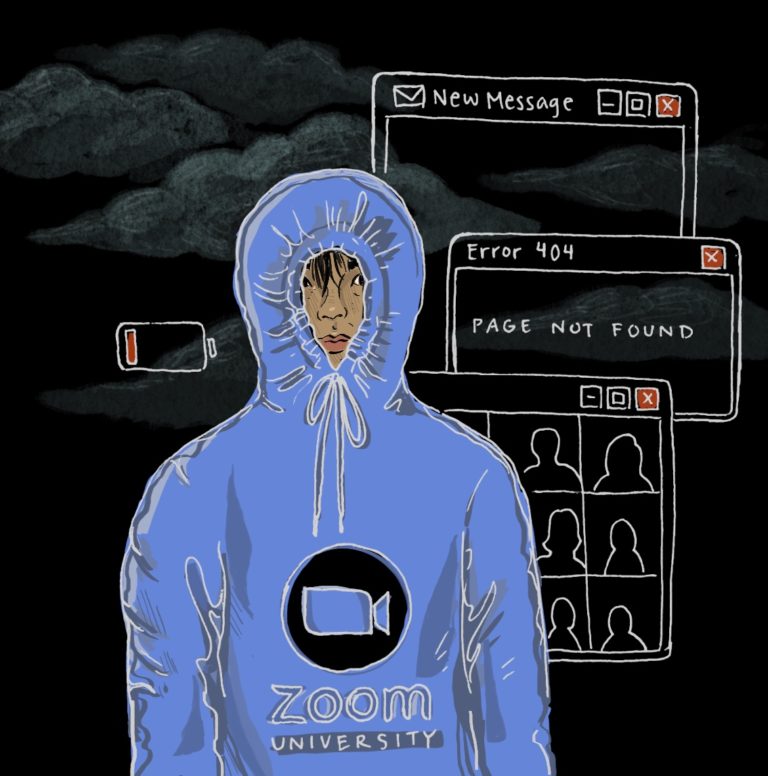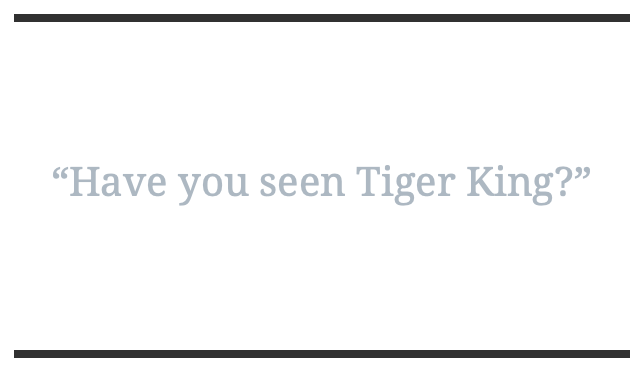
Alice Symington
Contributing Writer
“CAN YOU HEAR ME,” cries my muted professor.
We sit there, in our respective make-shift offices (beds), and watch him embark on a clicking frenzy. After a few uncomfortable seconds, we no longer have to lipread the screen — “Ah, there we go,” he sighs with a sound of audible relief as the lecture begins.
We are asked to turn the video screen on, perhaps to make it feel more like a “normal” class? However, the lagging video quality and the unfamiliarity of it all results in a mutually-felt awkwardness. Waiting for the lecture to begin (and distracting myself from the seemingly countless icons of unfamiliar faces watching me on my laptop screen), I can’t help but notice the uniform of pajamas and the debris of snacks that decorate the majority of video icons.
Perched on the end of my sofa, dusting crumbs off my hoodie, it dawns on me;

As the gravity and reality of COVID-19 sets in, institutions around the world are adapting to try to bring some stability and normalcy into people’s lives — within the boundaries of self-isolation. Few industries and organizations have escaped “the Rona’s” world tour, forcing people at all levels of society to restructure and redefine our ways of functioning.
A key victim of this reshaping is the education system. Most institutions have traditionally relied on human communication — having a mentor to advise and tutor interactively. However, as social distancing is the worlds’ greatest tool for slowing down the virus, education faces one main obstacle: how to recreate the personal relationship of teaching without a physical presence? A big group Facetime.
Zooming, (or its new verb form “to Zoom”), has offered a professional platform for all educators to actively communicate with their students in a safe, but interactive environment. But, while Zooming is great in theory, and is probably the most viable option for schools and universities, in reality, it is a bit weird.
As we come into week three of spring quarter, I’m starting to settle down into Zoom culture and etiquette. Week one Zooms were dedicated to prolonged class ice-breakers, followed up with each of my professors figuring out how to mute the attending students’ audio (whose background noise had some celestial ability to overpower the voice of the lecturer).
But with week one conquered and behind me, now a veteran to Zoom, I took on week two head first. This week I knew what I was getting into. I was armed with snacks, coffee, and my laptop charger. I had made myself comfortable with that crackling silence at the start of the lecture as people were logging on.

is basic Zoom etiquette, the standard small talk. It feels like a mandatory question at this point. But with each mention of Carole Baskin, I fear that my measure of time will be dictated by popular Netflix documentaries.
But coming into week three of the quarter, it feels like both students and professors are relaxing into our online community. The transitions of my professor’s video icon to their lecture notes are smoother — more certain. To seek affirmation in this newfound Zoom confidence I’ve noticed, I asked my friend Luke what he felt about the whole Zoom thing.
Did he miss the effort of going to class and actually chatting to people that went beyond TikTok banter? “I never went to lectures anyway,” he said, “so, it’s ideal really.” In many ways Zooming is efficient. You cut out commuting time, you’re in the comfort of your own home, and snacks are in hands reach. However, the grainy quality of my wifi does mean that I have to interpret portions of what my lecturer is trying to say.
Zoom is not a perfect alternative to in-person lectures. It doesn’t justify the cost of UC Santa Barbara’s fees, and it threatens the very foundations of how we as a society learn. However, despite the chaos of Zoom and the awkwardness it invites into our homes, it also stands as a reminder that even in a global pandemic life we can have some normality. And even with the plethora of ways to distract yourself throughout the day with your new corona-born hobbies of yoga, drawing, and cooking — your assignment is still due on Gauchospace.
















